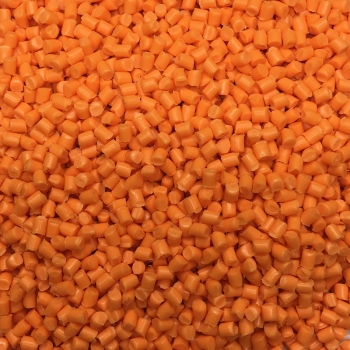What factors should be considered in the selection of Jiangmen engineering plastics
1. Mechanics
Form and size of stress, form and time of load, anti fatigue requirements, allowable deformation, overload and accidental stress conditions, impact resistance requirements, etc.
2. heat
Normal operating temperature, maximum and minimum operating temperature.
3. environment
Contact with solvents and various vapors, chemical reaction with acid and alkali, water absorption, UV and environmental oxidation, sand and rain erosion, mold and microorganism, etc.
4. toxicity
Flame retardant, toner, additive or toxicity during decomposition.
5. appearance
Consistency and persistence of transparency, surface brightness and color.
6. size
Allowable error and dimensional stability, weight factor.
7. production
Selection of processing technology, assembly method, trimming and secondary processing, quality control and supervision.
8. Economics
Material cost, mold cost, processing machinery cost, auxiliary equipment cost, operation cost, machinery maintenance cost, etc.

9. statute
Safety regulations (flame retardant, food, medicine).
Industrial regulations (automobile industry, electronic industry, etc.).
10. General structural parts
Requirements: there are no special requirements for strength and heat resistance. It is generally used to replace steel or other materials, with large batch and high productivity. The cost is low, and sometimes there are certain requirements for appearance.
Application: electronic parts, electrical (machine) shell, stationery, daily necessities, toys, instruments, fasteners.
Materials: low pressure polyethylene (HDPE), polyvinylidene chloride (PyC), modified polystyrene (20a, 204), ABS, polypropylene (PP).
11. Transparent frame
Requirements: same as above, with good transparency.
Application: lampshade, instrument lens, toy, optical lens.
Materials: acrylic PMMA, modified polystyrene (204203a), polycarbonate (PC), GP, San, ABS, and polypropylene (PTFE, F-4).
12. Wear resistant stressed transmission parts
Requirements: high strength, rigidity, toughness, wear resistance, fatigue resistance and thermal stability.
Applications: bearings, gears, racks, turbines, cams, rollers, couplings.
Materials: nylon, MC nylon (monomer cast nylon), Polyoxymethylene (POM), polycarbonate (PC), polyether (PPO), linear polyester, polyphenoxy. The tensile strength is above 58.8kpa, and the working temperature is 80-120.
13. Antifriction self-lubricating parts
Requirements: small force, fast movement speed, low friction coefficient, high wear resistance and good self lubrication.
Application: piston ring, mechanical seal ring, sliding guide rail, bearing.
Materials: Poly maple (PSU), POM filled with F-4, poly (perfluoroethylene propylene) (F-46), low pressure polyethylene (HDPE).
14. High temperature resistant structural parts
Requirements: working at high temperature, with high thermal deformation temperature and high temperature creep resistance, and high temperature wear resistance, corrosion resistance and electrical insulation.
Application: high temperature structural transmission parts, gears, bearings, piston rings, pumps, valves, class B, F, h, C electrical insulation parts.
Materials: Poly maple (PTFE, F-4), with phenyl ether, poly (perfluoroethylene propylene) (F-46), etc.
15. Corrosion resistant parts
Requirements: good corrosion resistance to acid, alkali and organic solvents.
Application: chemical pipeline, container, etc.
Materials: polymaple (PSU), F-4, polyvinylidene chloride (PyC), polypropylene (PP).
This article is from Jiangmen Engineering Plastics:http://www.wywantong.com/
-
04-13
PVC Engineering Plastics: how PVC plastic pipes are formed
The forming process of PVC plastic pipes should start from the raw materials of PVC plastic granules, which can be divided into soft PVC and hard PVC according to the added amount of stabilizer, plast
-
11-12
What is the filling property of Jiangmen engineering plastics
What is the filling property of Jiangmen engineering plasticsIn recent years, PC modified plastics have developed rapidly in China, and its industrial system is gradually established and improved. Th
-
10-08
Jiangmen Engineering Plastics: how to classify Jiangmen engineering plastics?
How to classify Jiangmen engineering plastics? 1. Classification by application characteristicsAccording to the different application characteristics of famous plastics, plastics are usually divided
-
08-30
Application scope of PBT engineering plastics
PBT engineering plastics are widely used in electronics, car industry, office machinery and other fields. In Japan and the developed countries in Europe, PBT engineering plastics are mainly used in t